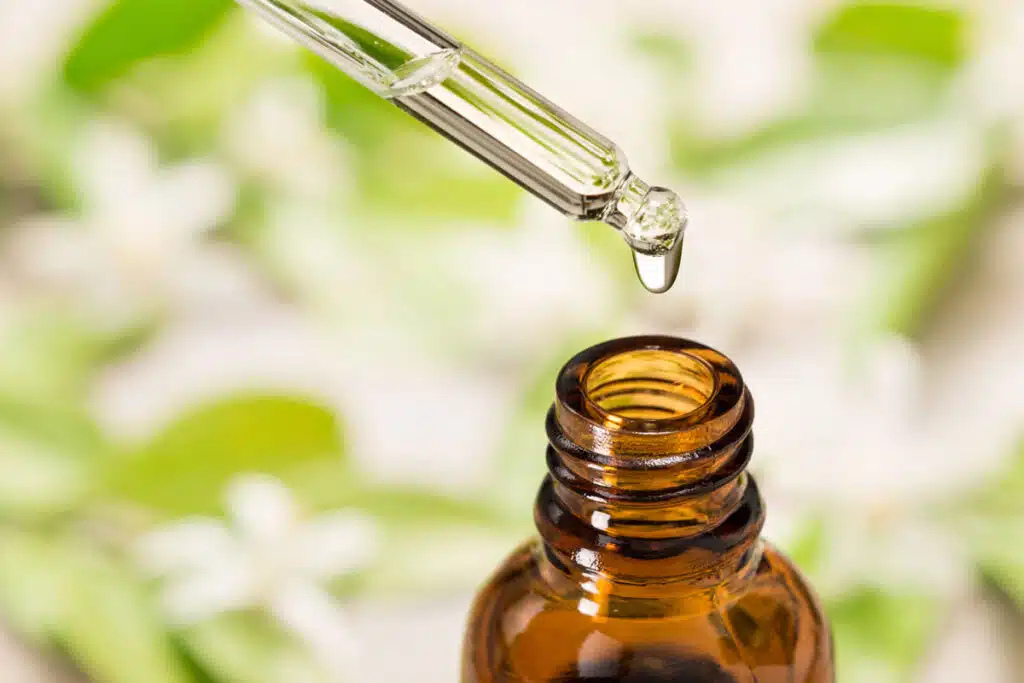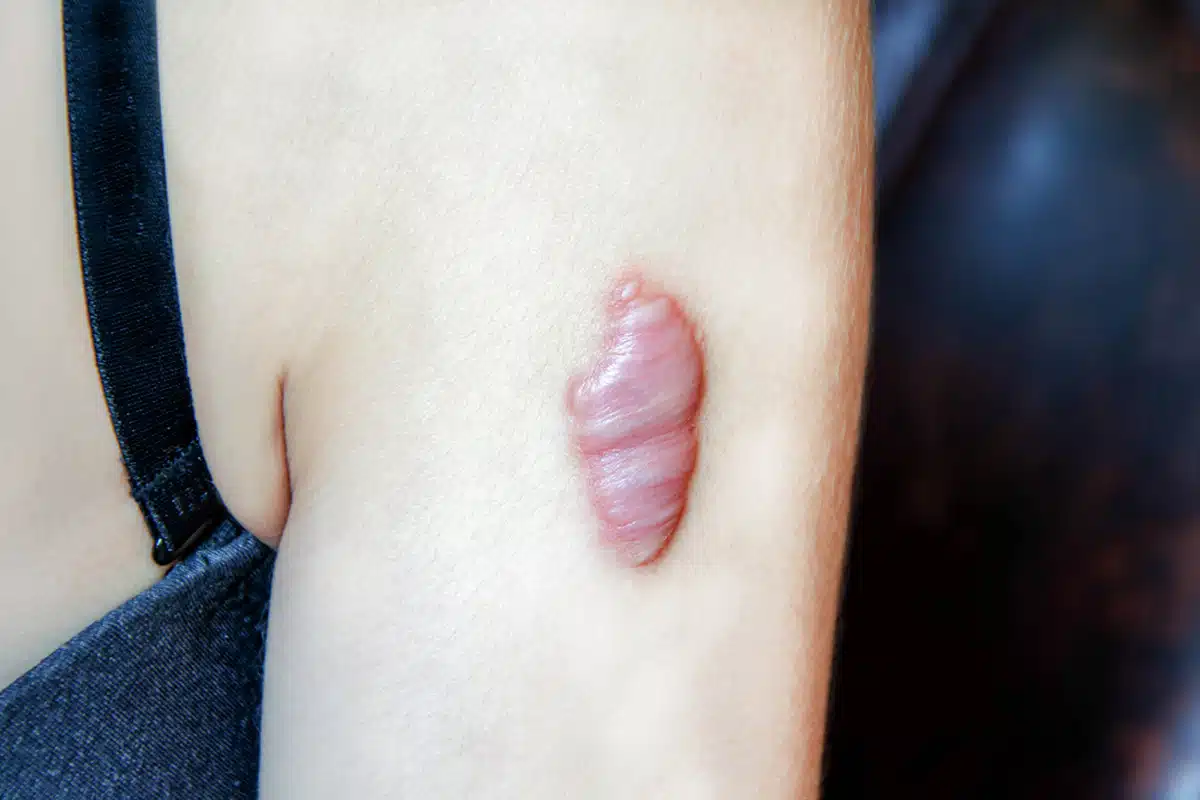Are you familiar with keloids? They’re not just regular scars; they’re overgrown scars that can be uncomfortable and cosmetically displeasing. Addressing keloids isn’t a simple matter, as they can recur even after removal. Thus, understanding keloid removal techniques, from surgery to natural remedies, paves the way to effectively manage them. By exploring these options, informed decisions can be made, enhancing your bodily comfort and confidence.
Understanding Keloids: Insights into Causes and Risks
Keloids are a type of scar, specifically hypertrophic scars, which occur when the skin’s healing process is overly aggressive. Instead of forming a neat, flat line, the healing skin piles up into a raised, often shiny scar that can be dark in color. Keloids often result from injury or certain types of surgery and usually rise significantly beyond the surface of the skin.
The exact cause of keloids is unknown, but they seem to be associated with a family history of keloids, suggesting a genetic predisposition. Some skin types also have a higher risk of developing these dermal anomalies. For instance, people with darker skin and younger individuals are more predisposed to getting keloids.
Additionally, keloids might form due to changes in the cellular signals controlling proliferation and inflammation during the healing process. While they don’t pose any health risks, they often cause cosmetic concerns, discomfort, and itchiness, which might necessitate treatment.
Benefits of Treating Keloids
Treating keloids offers a range of benefits that go beyond just enhancing one’s physical appearance. Here are some of the key advantages:
Psychological Benefits
- Successfully treating keloids can lead to increased self-esteem as the appearance of scars improves, boosting confidence.
- Many individuals experience a decrease in anxiety related to their appearance, contributing to overall mental well-being.
Physical Relief
- Relief from discomfort, itching, and pain associated with keloid scars is a common benefit of effective treatment.
- Effective keloid treatments often encourage the regeneration of healthier skin in the scarred area.
- Treating existing keloids reduces the likelihood of new keloid formation at the same or different sites, serving as a preventative measure
These advantages highlight why effective keloid treatment is crucial, impacting both mental and physical health positively.
Surgical Treatments for Keloid Removal
Surgery for Keloid Removal
This surgery involves cutting out the keloid scar tissue, offering immediate results. It requires careful post-surgical care to ensure optimal healing and minimize the chance of recurrence. Surgical excision is best suited for large or severe keloids where other treatments might not be effective.
Laser Surgery for Keloids
Laser treatments for keloid scars are a less invasive option compared to traditional surgery. These treatments use focused light beams to reduce the thickness of keloids and improve their appearance. Laser therapy is often combined with other treatments, such as corticosteroid injections, to enhance results. It is particularly beneficial for patients seeking a balance between efficacy and minimal invasiveness.
Cryotherapy in Keloid Treatment
Cryotherapy involves freezing the keloid tissue with liquid nitrogen, leading to its gradual reduction. This treatment is more suitable for smaller keloids and might require multiple sessions for effective results. It is known for its relative simplicity and quick recovery times compared to other surgical options.

Superficial Radiation Therapy for Keloid Scars
Superficial radiation therapy, used post-surgery, prevents the recurrence of keloids by utilizing low-dose radiation. It is effective in reducing the risk of keloids returning after removal and is often recommended for patients with a high tendency for keloid recurrence.
Non-Surgical Keloid Removal Options
Steroid Injections and Their Efficacy
Steroid injections, particularly corticosteroid injections, are commonly used for keloid treatments. These injections help to reduce inflammation, flatten the scar, and improve its appearance. However, they may require repeated sessions and can be painful.
Silicone Gel Sheets as a Treatment Method
Silicone sheets and gels are a non-invasive treatment option for keloids. Applying these products directly to the scar helps to hydrate the area and reduce the size and appearance of the scar over time. Silicone gels are particularly effective as they form a protective barrier over the scar, maintaining skin moisture which is crucial for proper scar healing.
Natural Keloid Treatments
Herbal Remedies for Keloid Management
Herbal remedies, particularly from the sphere of Traditional Chinese Medicine, offer a unique and natural approach to managing keloid scars. These remedies are renowned for their anti-inflammatory and antibacterial properties, which can be crucial in reducing the appearance and size of keloid scars. By focusing on enhancing internal health, these treatments can indirectly improve the skin’s ability to heal and regenerate.
Essential Oils in Keloid Care
Essential oils like tea tree oil, garlic oil, and vitamin E oil are increasingly popular in the realm of natural keloid care. These oils are believed to promote collagen production, which is vital for healthy skin regrowth and could play a role in reducing keloid scars. It’s essential, however, to use these oils with caution, especially for those with sensitive skin or a predisposition to keloid formation, as they can sometimes irritate. Regular, careful application of these oils can be a gentle yet effective part of a keloid management routine.
Holistic Approaches to Keloid Removal
The concept of natural treatments for keloid removal extends beyond topical applications, embracing the holistic approach of treating the body as a whole. This perspective considers the interconnectedness of mental, social, and physical health. Using natural substances like lemon juice, which is rich in vitamin C, can support collagen synthesis and potentially expedite the healing of scar tissue.
Moreover, adopting a lifestyle that includes a balanced diet rich in antioxidants and regular physical activity can promote skin regeneration and resilience from within. These natural methods might not offer the quick fixes of clinical treatments, but they present a less invasive alternative.

Other natural options
In addition to the treatments mentioned, other natural remedies have gained attention for their potential in keloid care:
- Lukewarm Water: Gently cleansing the affected area with lukewarm water prepares it for treatment, ensuring no further irritation to the keloid scar.
- Apple Cider Vinegar: Known for its astringent properties, applying apple cider vinegar to keloid scars can help reduce their size and redness over time.
- Raw Honey: Celebrated for its healing and anti-inflammatory properties, raw honey can be used as a topical treatment to soothe and promote the healing of keloid scars.
- Cold Water Compresses: Useful in reducing inflammation and providing relief, cold water compresses can be a soothing remedy for discomfort associated with keloid scars.
Each of these natural remedies offers a gentle way to manage keloid scars.
Prevention and Long-Term Care Post-Treatment
Preventing the formation of new keloids is as crucial as treating existing ones. Proper wound care is essential, especially for those with a history of keloids or a family predisposition. Keeping the skin clean and adequately moisturized, avoiding deep wounds or skin alterations, and using sun protection can help minimize the risk of keloid formation. Post-treatment care also involves adhering to recommended skincare routines to promote proper healing and reduce the likelihood of recurrence.
Medical vs. Natural Treatments for Keloids
When comparing medical and natural treatments for keloids, each offers distinct benefits:
Medical Treatments
- Precision targeting of keloid tissue significantly improves its appearance.
- Typically yield quicker results compared to natural remedies.
- Professional supervision ensures close monitoring and tailored treatment plans.
- A comprehensive approach includes both treatment and aftercare, crucial for effective healing and preventing recurrence.
Natural Treatments
- Focus on gradual improvement and holistic approaches to keloid management.
- Safer for mild keloid concerns or sensitive skin.
The choice between medical and natural treatments depends on the keloid’s severity, individual health, and personal preferences. Consulting with a healthcare professional is crucial for making an informed decision.
Consult with Keloid Experts
If you are struggling with the appearance of keloids and are unsure about the best treatment options for your specific situation, it is essential to consult with experts in the field. Dr. Salloum and Dr. Mendez are experienced professionals who can provide valuable insights and guidance regarding medical treatment options for keloids. With their expertise, they can assess the severity of your condition and recommend personalized treatment plans tailored to your needs. Don’t let keloids impact your self-confidence any longer! Schedule an appointment with Dr. Salloum and Dr. Mendez today to explore effective medical treatments that can help improve the appearance of your keloids.
